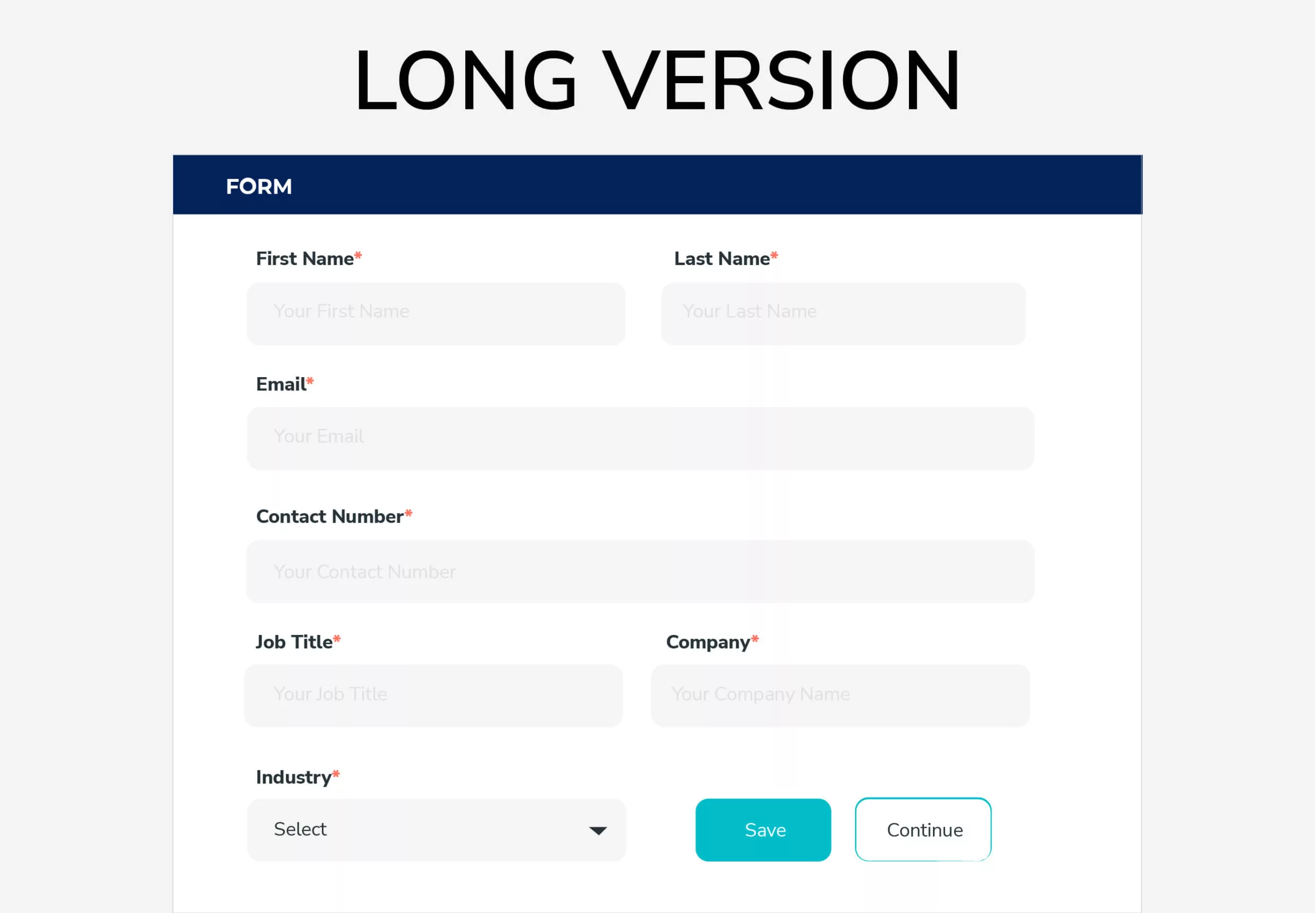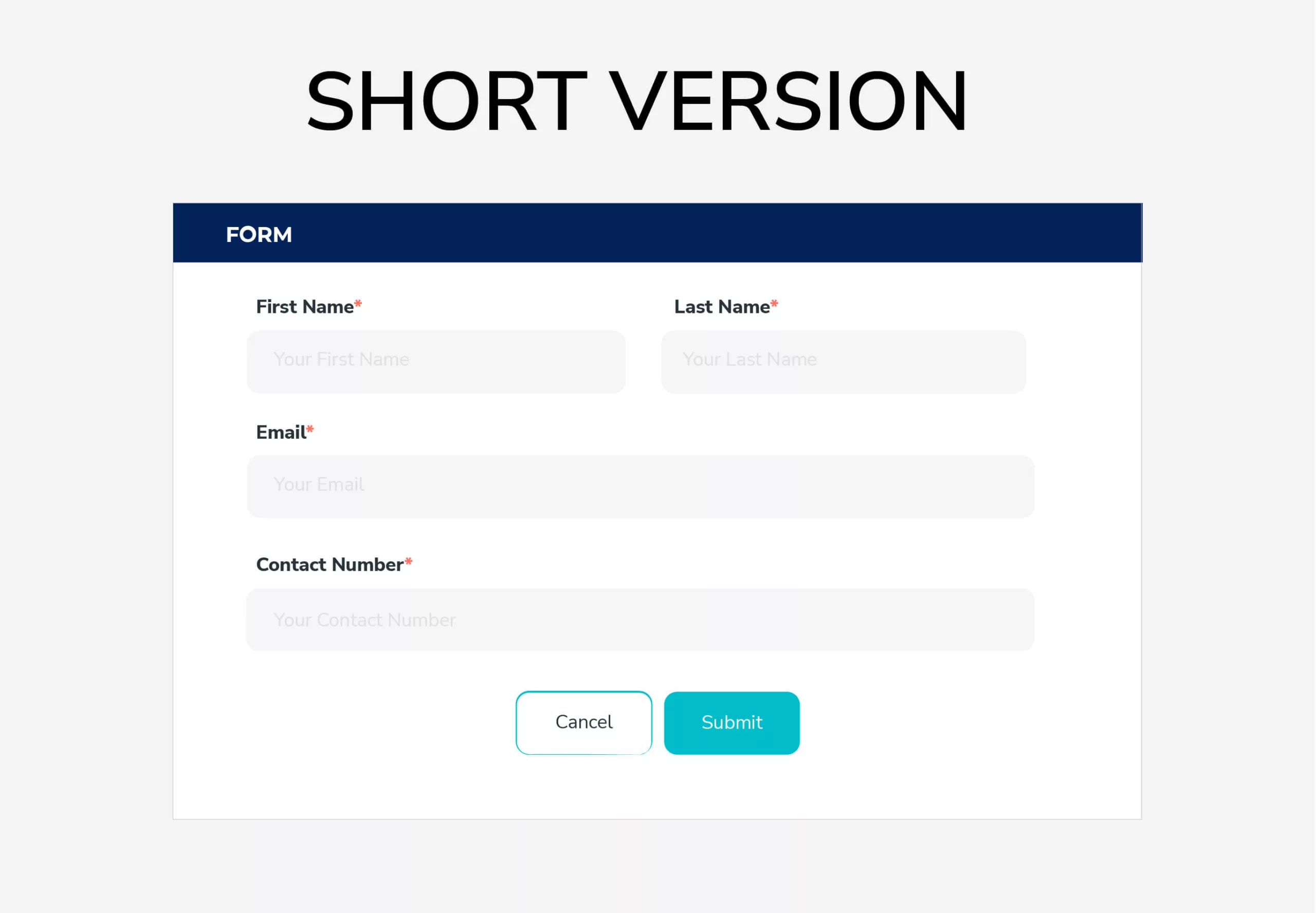User Experience (UX) plays a pivotal role in B2B lead generation, influencing how potential clients interact with your brand and ultimately, whether they convert into leads. A seamless and intuitive user experience can significantly impact the success of your lead generation efforts.
To improve the user experience in lead generation, we delve into forms and their impact on acquiring crucial lead information.
Forms are the foundation for collecting invaluable lead information in lead generation. They are pivotal touchpoints where prospects willingly offer details crucial for initiating meaningful interactions and potential conversions.
Forms play a multifaceted role, not just as data collection tools but as facilitators of user engagement. They enable businesses to capture essential information, such as contact details and specific preferences, fostering the groundwork for personalized communication and targeted marketing strategies.
The article navigates the difference between using short forms and long forms, scrutinizing their respective advantages and considerations and the art of striking the right balance between data collection and user experience. By the end, readers understand how form length impacts the user experience in B2B lead generation and the strategic approaches to optimize this essential aspect of lead capture.
Using Long Forms

Advantages
Long forms offer a multitude of advantages in the realm of B2B lead generation:
Detailed Data Collection:
Long forms excel in B2B lead generation due to their capacity for extensive data collection. These forms allow businesses to delve deeper into the details, capturing a wide spectrum of information about potential leads. This comprehensive approach results in a rich data pool, encompassing various aspects such as demographics, firmographics, interests, pain points, and specific needs.
Comprehensive Lead Profiling:
This wealth of information contributes to comprehensive lead profiling, painting a detailed portrait of each prospect. It enables businesses to form a nuanced understanding of their audience, going beyond surface-level insights to grasp the intricacies that define each lead.
Targeted Nurturing:
The real strength of long forms lies in the strategic advantage they offer for targeted nurturing. Armed with in-depth insights gleaned from these forms, businesses can tailor their communication and engagement strategies in a highly personalized manner. This targeted approach involves addressing specific pain points, offering solutions tailored to individual needs, and delivering content or services that resonate deeply with each lead. This level of personalization enhances the chances of successful conversions, as it establishes a more meaningful and relevant connection between the business and the potential customer.
Challenges
Here’s a deeper dive into the challenges associated with using long forms for lead generation:
Higher Abandonment Rates:
Lengthy forms often result in users abandoning the form before completion. The sheer volume of fields to fill out can be daunting, leading to impatience or a lack of willingness to invest the time required. Users may prioritize brevity and convenience, choosing to abandon the form rather than invest in extensive completion.
Increased User Effort:
Long forms demand more effort from users. Asking for a substantial amount of information might create a perception of high effort for users, potentially dissuading them from completing the form. This increased effort can act as a barrier, particularly if the perceived benefit or value of the form doesn’t justify the time and input required.
Potential User Frustration:
Lengthy forms can frustrate users, especially if they perceive the requested information as excessive or irrelevant to their immediate needs. Users might question the necessity of providing extensive details, especially if they don’t see a direct correlation between the information requested and the value they expect to receive. This frustration can lead to negative brand perceptions or discourage future interactions.
Short Forms: Benefits and Considerations
Advantages
Short forms offer distinct advantages in B2B lead generation due to their concise nature, creating a smoother user experience and facilitating efficient data collection.
Reduced Friction for Users:
These forms create a smoother experience by presenting a limited number of fields, minimizing the effort required from users. Users perceive the form-filling process with fewer input fields as more manageable and less time-consuming. This reduced perceived effort encourages users to engage with the form more willingly, reducing friction and making the interaction more user-friendly.
Higher Completion Rates:
The streamlined nature of short forms often results in higher completion rates. Users are more likely to complete shorter forms as they require less time and effort. With a straightforward and concise layout, users are more inclined to proceed, leading to fewer instances of form abandonment.
Quick Data Collection:
Short forms prioritize collecting essential information promptly. By focusing on key details necessary for initial engagement, they expedite the data collection process without overwhelming users. This rapid capture of vital data ensures a swift exchange of information between the user and the business, allowing for quicker follow-ups and initial contact.
Challenges
Short forms, while beneficial for reducing friction and encouraging completion, pose challenges due to their succinct nature, which can limit the depth of data collected and potentially impact lead profiling.
Limited Data Collection:
Short forms prioritize brevity, which restricts the amount of information gathered. This limitation can result in a lack of comprehensive data, potentially leaving out critical details that could provide a more holistic understanding of the lead.
Potential for Missing Crucial Information:
The concise format of short forms increases the likelihood of overlooking essential information. While aiming for brevity, there’s a risk of omitting crucial details necessary for effective lead nurturing or personalized communication.
Shallow Lead Profiling:
Lead profiling might need to be more superficial due to the limited number of form fields. This limitation restricts the depth of understanding about the lead’s preferences, pain points, or specific needs, hindering the ability to tailor interactions and communication strategies effectively.
While short forms excel in encouraging completion and reducing user friction, their concise nature can lead to challenges related to incomplete data collection, the potential omission of critical information, and the creation of relatively shallow lead profiles.
Data or lead enrichment serves as a strategic solution to address the challenges associated with using short forms, particularly the limitation of data collection. When short forms restrict the amount of information gathered, lead enrichment steps in to augment and enhance the existing data, compensating for the gaps left by limited form fields.
Lead Enrichment, aka Data Enrichment
By leveraging data enrichment services or tools, businesses can supplement the data collected through short forms with additional valuable insights. These services employ various methods, such as appending missing details, verifying existing information, or enriching profiles with additional data points from external databases or sources.
Data enrichment significantly augments the depth and quality of the available information. It helps create a more comprehensive and robust profile of leads, offering a clearer understanding of their preferences, behaviors, and needs despite the constraints of a shorter form. This enriched data empowers businesses to execute more targeted and personalized marketing strategies and engagement tactics, even when the initial data collection is limited.
Lead Enrichment Using SalesIntel
With SalesIntel, businesses can ensure only clean, verified data enters their CRM systems. This process streamlines operations by exporting accurate and enriched data, avoiding clutter or inaccuracies.
The platform facilitates an automated data enrichment process, functioning seamlessly in the background. Users can schedule routine enrichments for their databases by predefined triggers, regular cadences, or manual checks, ensuring data remains consistently up-to-date and enriched.
Moreover, SalesIntel empowers real-time enrichment of forms, addressing missing data fields as forms are captured. This capability ensures that incoming information from shorter forms gets supplemented swiftly, enriching any list or database to provide a more comprehensive and detailed profile of leads.
With SalesIntel’s suite of enrichment tools, businesses can enhance their data effortlessly, improving insights and enabling more targeted and personalized engagement strategies.
Want to see how it works? Schedule a demo and learn what’s more to it for you.





